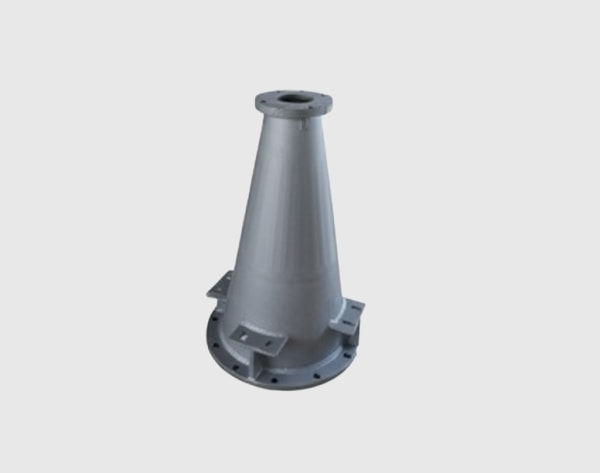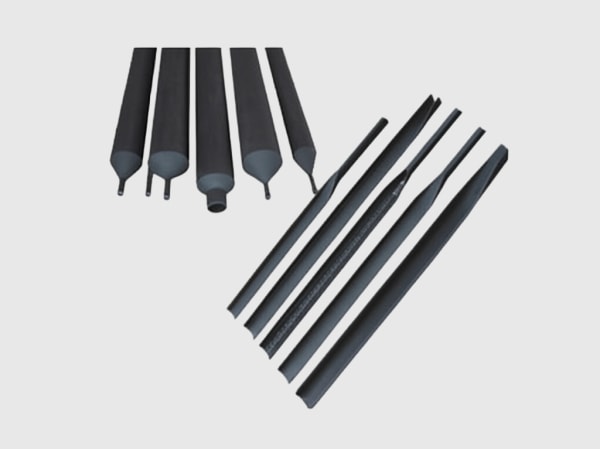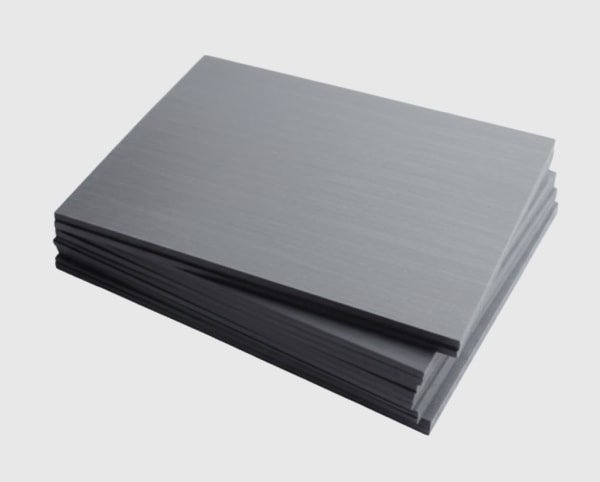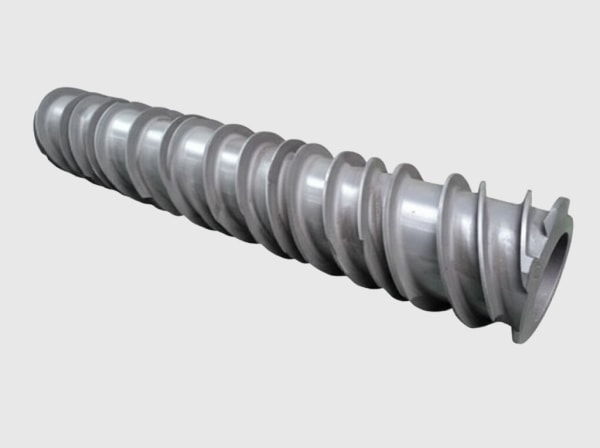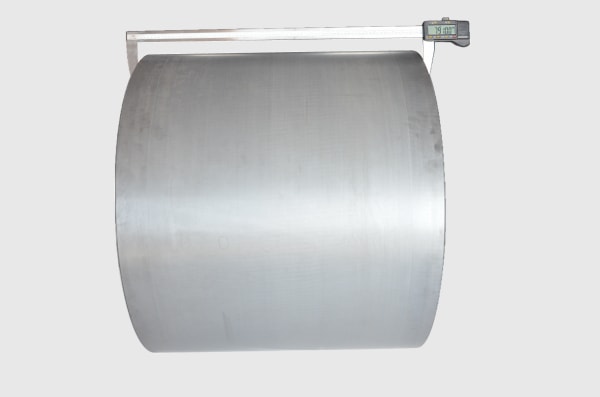Discover Chilean SiC Products & Export Options
In today’s rapidly evolving industrial landscape, the demand for materials that can withstand extreme conditions is paramount. Custom silicon carbide (SiC) products have emerged as a cornerstone in high-performance applications, offering unparalleled properties in environments where traditional materials simply fail. This blog post delves into the world of SiC, focusing on its critical role across various industries and exploring the opportunities for procuring these advanced materials, including export options for global clients seeking high-quality SiC components from reliable sources.
Main Applications for Custom SiC Products
Silicon carbide’s exceptional properties make it indispensable across a wide spectrum of demanding industries. Its high thermal conductivity, extreme hardness, chemical inertness, and excellent thermal shock resistance position it as a material of choice for engineers and procurement managers seeking optimal performance and longevity.
- Semiconductor Manufacturing: SiC is vital for wafer processing equipment, including susceptors, pedestals, and furnace components, due to its purity and thermal stability at high temperatures.
- Automotive Industry: Lightweight SiC components are gaining traction for brake discs, engine parts, and power electronics, contributing to improved fuel efficiency and performance in electric vehicles.
- Aerospace & Defense: Used in rocket nozzles, heat shields, and structural components requiring high strength-to-weight ratios and resistance to extreme temperatures and corrosive environments.
- Power Electronics: SiC devices offer superior efficiency, higher operating temperatures, and smaller footprints compared to silicon-based counterparts, revolutionizing inverters, converters, and power modules.
- Renewable Energy: Essential for solar panel manufacturing equipment and components in wind turbines, where durability and performance under harsh conditions are critical.
- Metallurgy & High-Temperature Processing: SiC crucibles, kiln furniture, and furnace liners are widely used for their thermal stability and resistance to corrosive melts.
- Chemical Processing: Components like pump seals, valves, and heat exchangers benefit from SiC’s outstanding chemical resistance to acids and alkalis.
- LED Manufacturing: SiC substrates are used for growing GaN (gallium nitride) for high-brightness LEDs, enabling superior performance.
- Industrial Machinery: Wear parts, bearings, and nozzles made from SiC offer extended operational life in abrasive environments.
- Telecommunications: SiC is used in high-frequency, high-power electronic devices for telecommunications infrastructure.
- Oil and Gas: Components for downhole tools and harsh environment sensors leverage SiC’s resilience to extreme pressures and corrosive fluids.
- Medical Devices: Precision SiC components are found in various medical instruments requiring high wear resistance and biocompatibility.
- Rail Transportation: SiC power modules enhance the efficiency and reliability of traction systems in trains.
- Nuclear Energy: Used in advanced nuclear reactor designs for its neutron transparency and radiation resistance.
Why Choose Custom Silicon Carbide?
The ability to customize silicon carbide components offers significant advantages over off-the-shelf solutions. Customization ensures that the material’s unique properties are precisely tailored to the specific application, maximizing performance, efficiency, and longevity. This is particularly crucial for complex geometries and highly specialized industrial requirements.
- Thermal Resistance: SiC maintains its strength and integrity at extremely high temperatures (up to 1600°C), making it ideal for high-temperature furnaces, heat exchangers, and aerospace components.
- Wear Resistance: With exceptional hardness, SiC offers superior resistance to abrasion and erosion, extending the lifespan of parts in abrasive environments like pump seals, nozzles, and bearings.
- Chemical Inertness: SiC exhibits remarkable resistance to most acids, alkalis, and molten metals, making it suitable for chemical processing equipment and semiconductor manufacturing.
- High Strength-to-Weight Ratio: Its lightweight yet robust nature is beneficial for applications where reducing mass is critical, such as in aerospace and high-performance automotive parts.
- High Thermal Conductivity: Crucial for heat dissipation in power electronics and semiconductor devices, preventing overheating and improving reliability.
- Excellent Thermal Shock Resistance: SiC can withstand rapid temperature changes without cracking, making it ideal for thermal cycling applications.
Recommended SiC Grades and Compositions
Silicon carbide is not a monolithic material; it exists in various forms, each with distinct properties optimized for different applications. Understanding these grades is crucial for specifying the right custom SiC product.
| SiC Grade/Type | Key Characteristics | Typical Applications |
|---|---|---|
| Reaction-Bonded SiC (RBSC) | High strength, excellent wear resistance, good thermal conductivity, no shrinkage during firing. | Kiln furniture, wear plates, mechanical seals, nozzles. |
| Sintered SiC (SSC) | Extremely high hardness, superior strength at high temperatures, excellent chemical resistance. | Mechanical seals, bearings, high-temperature structural components, semiconductor parts. |
| Nitride-Bonded SiC (NBSC) | Good thermal shock resistance, excellent oxidation resistance, lower cost than SSC. | Kiln furniture, refractories, wear components. |
| Recrystallized SiC (RSiC) | High purity, excellent thermal shock resistance, good mechanical properties. | High-temperature furnace components, susceptors. |
| Liquid Phase Sintered SiC (LPS-SiC) | Improved fracture toughness, higher density, good for complex shapes. | Advanced mechanical seals, wear parts. |
Design Considerations for SiC Products
Designing custom SiC components requires a deep understanding of the material’s unique characteristics and manufacturing limitations. Careful design at the outset can significantly impact performance, manufacturability, and cost.
- Geometry Limits: SiC is a hard and brittle material, so sharp corners, thin walls, and abrupt changes in cross-section should be avoided to prevent stress concentrations and potential cracking during processing or in use.
- Wall Thickness: Uniform wall thickness is preferred to ensure even heating and cooling during sintering, reducing the risk of warping or cracking.
- Stress Points: Identify potential stress points during application and design for appropriate radii and chamfers to distribute stress more evenly.
- Tolerances: While SiC can achieve high precision, specifying tighter tolerances than necessary can increase manufacturing complexity and cost.
- Machinability: Consider the machinability of SiC in its green (unfired) state versus its densified state. Green machining is easier, allowing for more complex geometries before sintering.
- Joining Methods: If multiple SiC parts need to be joined, consider methods like brazing, diffusion bonding, or mechanical fastening, and design accordingly.
Tolerance, Surface Finish & Dimensional Accuracy
Achieving the required precision and surface quality for SiC components is crucial for their function, especially in high-tolerance applications. Post-sintering machining is often required to meet stringent specifications.
- Achievable Tolerances: While green machining offers good initial precision, sintering shrinkage can affect final dimensions. Post-sintering grinding and lapping are used to achieve tight tolerances, often down to micrometers.
- Surface Finish Options: Depending on the application, surface finishes can range from as-sintered (rougher) to highly polished (mirror-like) through processes like lapping and polishing. Rougher finishes are suitable for general wear applications, while smoother finishes are critical for seals, bearings, and semiconductor components.
- Dimensional Accuracy: Consistent dimensional accuracy is critical for component integration and performance. Suppliers should have robust quality control processes, including precise measurement and inspection, to ensure parts meet specifications.
Post-Processing Needs for SiC Components
After initial firing, many custom SiC parts undergo further processing to achieve their final desired properties, dimensions, and surface finishes. These steps are vital for optimizing performance and durability.
- Grinding: Precision grinding with diamond tools is commonly used to achieve tight dimensional tolerances and improve surface finish on densified SiC.
- Lapping & Polishing: For critical applications requiring extremely smooth surfaces (e.g., mechanical seals, optical components), lapping and polishing with fine abrasive slurries are employed.
- Sealing: In some applications, porous SiC grades might require impregnation or sealing to improve hermeticity or prevent fluid penetration.
- Coating: Coatings, such as CVD SiC or other thin films, can be applied to enhance specific properties like corrosion resistance, wear resistance, or alter surface energy for particular applications.
- Heat Treatment: While SiC is inherently stable at high temperatures, specific post-sintering heat treatments might be used to refine microstructure or relieve residual stresses.
Common Challenges and How to Overcome Them
While silicon carbide offers exceptional properties, its inherent characteristics can present manufacturing and application challenges. Understanding these and knowing how to mitigate them is key to successful implementation.
- Brittleness: Like most ceramics, SiC is brittle, making it susceptible to fracture under sudden impact or tensile stress.
- Mitigation: Design parts with generous radii, avoid sharp corners, and ensure proper mounting and handling to minimize stress concentrations. Consider tougher SiC grades if impact is a major concern.
- Machining Complexity: The extreme hardness of SiC makes post-sintering machining challenging and expensive, requiring specialized diamond tools.
- Mitigation: Optimize designs for “green” machining (before sintering) to minimize the need for post-sintering grinding. Work with suppliers possessing advanced machining capabilities.
- Thermal Shock: While SiC has good thermal shock resistance, extreme rapid temperature changes can still induce stress.
- Mitigation: Design for gradual temperature transitions where possible, or select SiC grades specifically optimized for thermal shock resistance.
- Cost: Custom SiC components can be more expensive than conventional materials due to complex manufacturing processes.
- Mitigation: Focus on the total cost of ownership, considering the extended lifespan, reduced downtime, and improved performance SiC offers. Optimize design for manufacturability to reduce production costs.
How to Choose the Right SiC Supplier
Selecting a reliable and capable custom silicon carbide supplier is critical for the success of your project. A strong partnership ensures high-quality components, on-time delivery, and valuable technical support.
- Technical Capabilities: Assess the supplier’s expertise in various SiC grades, their manufacturing processes (e.g., green machining, sintering, post-processing), and their ability to meet tight tolerances.
- Material Options: Ensure they offer the specific SiC grades suitable for your application and can provide detailed material datasheets.
- Quality Certifications: Look for certifications like ISO 9001, which demonstrate a commitment to quality management and consistent production.
- Engineering Support: A good supplier will offer design assistance, material selection guidance, and problem-solving support. Consider a partner that offers customizing support from concept to production.
- Production Capacity & Lead Time: Verify their capacity to handle your volume requirements and their track record for meeting agreed-upon lead times.
- Customer References: Ask for references from other B2B clients in similar industries to gauge their reliability and service quality.
- Global Reach & Export Experience: For international clients, confirm their experience with global logistics and export procedures.
Speaking of reliable suppliers, it’s worth highlighting the significant developments in custom silicon carbide manufacturing. While this blog post addresses Chilean SiC products and export options, it’s important to acknowledge a global leader in this field. Sicarb Tech, headquartered in Weifang City, China, represents a major hub for silicon carbide customizable parts factories. This region, home to over 40 SiC production enterprises, accounts for more than 80% of China’s total SiC output. Sicarb Tech has been instrumental in this growth, introducing and implementing advanced SiC production technology since 2015, which has greatly assisted local enterprises in achieving large-scale production and technological advancements.
As part of the Chinese Academy of Sciences(Weifang) Innovation Park and closely collaborating with the National Technology Transfer Center of the Chinese Academy of Sciences , Sicarb Tech leverages the robust scientific and technological capabilities of Chinese Academy of Sciences. They serve as a vital bridge for integrating and commercializing scientific and technological achievements, offering a comprehensive service ecosystem for technology transfer. With a domestic top-tier professional team specializing in customized SiC product manufacturing, Sicarb Tech has supported over 516 local enterprises with their advanced technologies, encompassing materials, processes, design, measurement, and evaluation. This integrated approach from materials to finished products allows them to meet diverse customization needs, offering higher-quality, cost-competitive customized silicon carbide components in China. To explore their comprehensive offerings, including their impressive case studies, you can visit their website.
Beyond providing custom components, Sicarb Tech is also committed to assisting international clients in establishing their own specialized factories. If you are looking to build a professional silicon carbide products manufacturing plant in your country, they can provide technology transfer for professional SiC production, along with a full range of turnkey services, including factory design, procurement of specialized equipment, installation and commissioning, and trial production. This ensures a more effective investment, reliable technology transformation, and a guaranteed input-output ratio for your in-country manufacturing initiatives. For more details on their services and to connect with their team, feel free to contact them directly.
Cost Drivers and Lead Time Considerations
Understanding the factors that influence the cost and lead time of custom SiC products is essential for effective budgeting and project planning.
Cost Drivers:
- Material Grade: Higher purity or specialized SiC grades (e.g., high-density sintered SiC) generally cost more than standard reaction-bonded SiC.
- Part Complexity: Intricate geometries, tight tolerances, and features requiring extensive post-sintering machining significantly increase manufacturing costs.
- Volume: Economies of scale apply; larger production runs typically lead to lower unit costs.
- Surface Finish Requirements: Achieving very fine surface finishes (lapping, polishing) adds considerable cost due to the labor-intensive nature of these processes.
- Inspection & Testing: Rigorous testing and certification requirements can add to the overall cost.
Lead Time Considerations:
- Design Complexity: Highly complex designs require more engineering time for design review and manufacturing planning.
- Raw Material Availability: While SiC raw materials are generally available, specialized purities or forms might have longer lead times.
- Manufacturing Process: The SiC manufacturing process itself (green machining, sintering, post-processing) is time-consuming. Sintering cycles alone can take days.
- Supplier Backlog: The supplier’s current production schedule and backlog will influence delivery times.
- Shipping & Logistics: For international orders and export from Chile, shipping methods and customs clearance times need to be factored in.
Frequently Asked Questions (FAQ)
- Q1: What is the typical lead time for custom SiC components?
- A1: Lead times vary significantly based on complexity, quantity, and the specific SiC grade. Simple components might take 4-6 weeks, while highly complex or large-volume orders can take 12 weeks or more. It’s crucial to discuss your specific requirements with the supplier for an accurate estimate.
- Q2: Can silicon carbide be repaired if damaged?
- A2: Repairing SiC is generally challenging due to its hardness and chemical inertness. Minor chips or cracks might sometimes be addressed through grinding, but extensive damage usually necessitates replacement. Prevention through proper design and handling is key.
- Q3: What are the main advantages of SiC over other technical ceramics like alumina or zirconia?
- A3: SiC generally offers superior thermal conductivity, higher temperature resistance, and better wear resistance compared to alumina. Against zirconia, SiC typically excels in hardness, thermal conductivity, and chemical inertness, especially at very high temperatures, although zirconia may offer higher fracture toughness in some applications.
Conclusion
Custom silicon carbide products are not just components; they are strategic investments that empower industries to push the boundaries of performance, durability, and efficiency. From the precision demands of semiconductor manufacturing to the extreme environments of aerospace and the critical requirements of power electronics, SiC offers solutions where other materials fall short. By understanding the various grades, design considerations, and the importance of selecting a knowledgeable supplier, engineers and procurement managers can unlock the full potential of this remarkable material. The global availability of high-quality SiC, including export options from regions with established manufacturing hubs, ensures that industries worldwide can access these advanced solutions to drive innovation and achieve unparalleled operational excellence.

